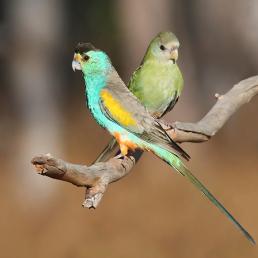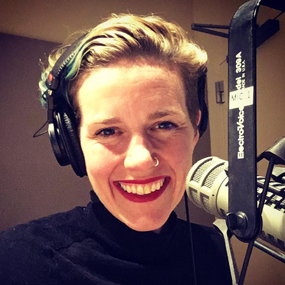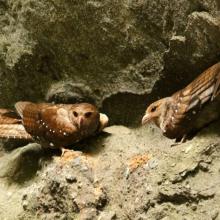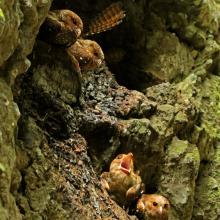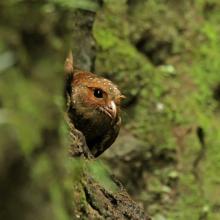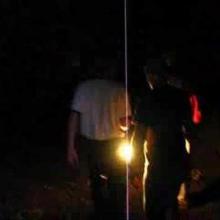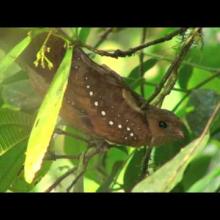

Join BirdNote tomorrow, November 30th!
Illustrator David Sibley and actor H. Jon Benjamin will face off in the bird illustration battle of the century during BirdNote's Year-end Celebration and Auction!
Nature has produced some exceptionally strange animals. One such creature is the Oilbird of northern South America. The Oilbird prefers a diet of wild berries and fruits, especially lipid-rich fruits like palm nuts and avocados (which leads to fatty young and the Oilbird's name). This unusual-looking bird is longer than a crow, with big eyes and a tiny bill protruding from a giant mouth. Oilbirds roost in extensive colonies in large caves. When the sun sets, Oilbirds emerge from their caves, like huge bats, to forage throughout the countryside for food. Thus, Oilbirds spend most of their lives in complete darkness.
BirdNote®
The Oilbird’s Lightless Life
Written by Bob Sundstrom
This is BirdNote.
[Calls of Oilbirds: http://macaulaylibrary.org/audio/4559]
These are the freakish snarls of the Oilbird, which spends its whole life in the dark. These birds live in caves in Trinidad and South America and fly out at night to search for food.
The Oilbird is adapted to this lifestyle. It uses echolocation — like a bat — to find its way in the pitch-black of its cave.
[Oilbird echolocation clicks and calls]
And the birds have excellent night vision — rivaling that of an owl’s — to help them forage after dark.
Fossils suggest that the Oilbird diverged from other bird families more than 50 million years ago. It has no close living relatives.
[Oilbird echolocation clicks and calls]
The Oilbird isn’t black, as its name might suggest. It’s actually a rich brown with large white spots. It has a hooked beak, like a hawk, but it’s not a meat-eater. The Oilbird lives on tree fruit, especially palm nuts and avocados, which it finds thanks to its keen sense of smell. This diet, rich in fat and oils, leads to plump chicks… and the name… Oilbird. In fact, humans used to boil down the birds to make oil.
For BirdNote, I'm Ashley Ahearn.
[Calls of Oilbirds: http://macaulaylibrary.org/audio/4559]
###
First set of bird sounds provided by The Macaulay Library of Natural Sounds at the Cornell Lab of Ornithology, Ithaca, New York: Oilbird calls [4559] recorded by David W Snow in Trinidad and Tobago's Arima Valley, in 1959.
Oilbird echolocation clicks and calls recorded by Andrew Spencer in Ecuador.
BirdNote's theme music was composed and played by Nancy Rumbel and John Kessler.
Producer: John Kessler
Executive Producer: Sallie Bodie
Editor: Ashley Ahearn
Associate Producer: Ellen Blackstone
Assistant Producer: Mark Bramhill
© 2015 BirdNote January 2015 / January 2020 Narrator: Ashley Ahearn
ID # oilbird-01-2015-01-27 oilbird-01b
